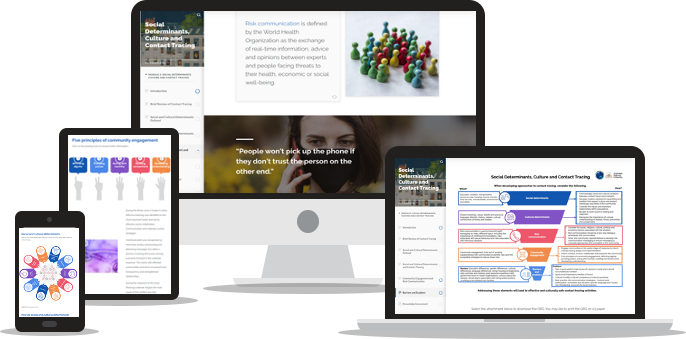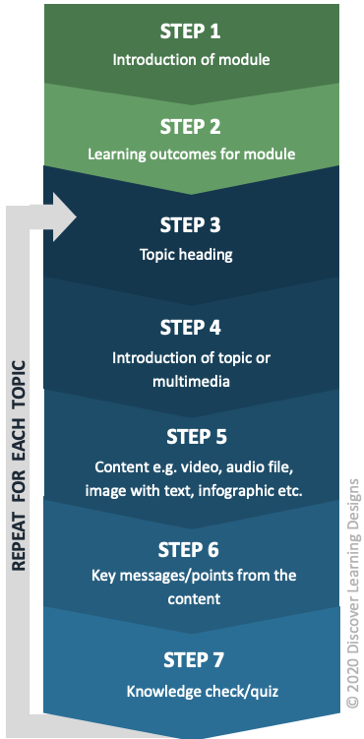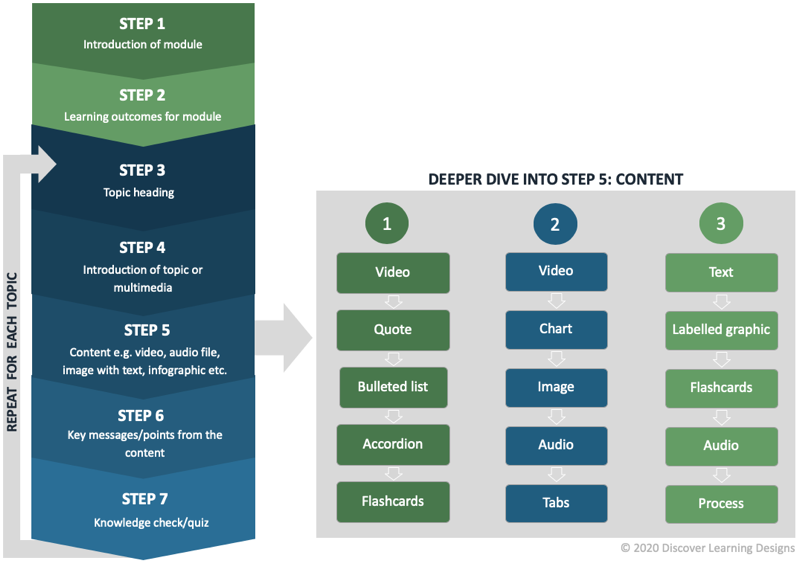How-To: Design For Online Courses
Learn how to design online courses and eLearning.
Developing online courses and eLearning
If you think developing eLearning programs is an easy task – you may be right! But wait…
eLearning authoring tools are becoming increasingly user-friendly, with some offering templates to reduce time designing eLearning programs and skipping to the ‘content dump’. This is where it can all go horribly wrong…
The thing is, many L&D consultants become carried away with building ‘bells and whistles’ eLearning programs, but completely disregard key instructional design principles. It doesn’t matter how eye-catching a slide deck is; if it doesn’t reflect effective learning principles, it’s a waste of time, energy and money! Developing eLearning programs may be easy – which is why there are so many that fail to provide valuable learning experiences.
So how do you create programs that are not only appealing, but also engaging and effective?

Here are a few tips…
How to design online courses
How to structure your eLearning course
Simply put, your course should include a landing page, an introduction, module ‘chunks’ and a summary.

Landing Page
Adults see value in meaningful learning experiences that are relevant to their lives. [1] In order to see meaning, they need a clear ‘why’ and ‘what’ regarding the learning program. The landing page should clearly articulate the program’s purpose, duration and learning outcomes.
Introduction
Insert navigational instruction that reflect your audience’s digital literacy. Always provide generic navigational instructions in the introduction. For those less familiar with eLearning programs, you may also insert directions before each interactive element e.g. ‘Tap the + buttons to reveal further information’.
Introduce the program, including background information, its purpose/intention and its overall structure (e.g. learning map). This way, learners can clearly see ‘WIIFM’ and the learning journey they are embarking on.
Modules
This is where the learning content lies. We’ll have a closer look at this section below.
Summary
Congratulate participants on completing the course to build a sense of achievement.
Summarise their learning by restating the learning outcomes. This allows learners to reflect on what they’ve learned and their progress.
Suggest ways for learners to embed and action their learning. 55% to 70% of learning occurs during on the job experience/through application. [2] Knowledge application is an important part of not only reinforcing learning, but also building on and refining understanding and skills developed during the program.
Content sequencing instructional design eLearning
Let’s take a closer look at the seven-step process to follow when structuring and sequences eLearning modules.

Steps 1 & 2
It is important to introduce the module and learning outcomes so learners have a high level overview of what they’re about to learn. You might choose to repeat the learning map at the beginning of each module to highlight where learners are on their learning journey. This also builds a sense of progress.
Steps 3-7
These steps focus on a particular topic within a module. The topic is introduced, content delivered, key messages reviewed, and knowledge and skills applied.
You may have heard the phrase: ‘Tell them what you’re going to tell them, then tell them, then tell them what you told them.’ [3] Steps 4, 5 and 6 do this by introducing the content, delivering the content, then summarising the main points. This repetition helps the learning ‘stick’. Step 7 is a knowledge check or quiz to ensure knowledge transfer has a occurred.
Repeat steps three to seven for each topic within a module when sequencing for effective eLearning.
Catering for audiences with varying knowledge
Some programs may be developed for audiences with varying knowledge and experience.
In these cases, we recommend providing opportunities for learners to take ‘deeper dives’ into certain topics, in addition to the core modules. This in effect varies the content sequencing. This content may be optional or mandatory for select learners.
For example, mandatory content could be incorporated for learners that require further support. This need could be identified through a ‘confidence check’ or by responding incorrectly to a question. The learner would be directed to further information and activities regarding the learning need, and complete the lesson before continuing on to the core modules. This ensures the learner has grasped the foundational knowledge before building on these concepts during the next core module.
Optional lessons may be incorporated to include information that other learners may consider irrelevant or confusing. These sections may also include links to other resources that allow participants to extend their learning.
Content-sequencing instructional design
How to effectively structure content will depend on the content itself.
For example – information can be categorised using tabs or accordions, whereas processes can best be delivered using the timeline or process blocks.
The diagrams below describe three common patterns DLD uses to present content.
Remember to use a variety of interactive elements to keep learners active, engaged and increase their motivation to learn. [4]
Contextualise content to make learning meaningful and relevant to learners’ lives. [5]
So – when developing your next eLearning program, don’t forget about key principles of learning design.
We want learners to learn.
To ensure this, design online learning that is not only appealing, but also engaging and effective.
Learn more about how to design online courses
Related Articles and Blogs
- Our eLearning Services
- eLearning examples
- Learning Management Systems
- Computer Supported Collaborative Learning
- Mobile Wireless Devices (MWDs) for Technology-Enhanced Learning (TEL)
- Feedback and Formative Assessment in a Virtual Learning Environment
- Learning and Teaching with Wikis
- Social Computing
Read more of our blog articles here.
References
[1] Adult Learning Australian (n.d.). Adult learning principles. Retrieved from https://ala.asn.au/adult-learning/the-principles-of-adult-learning/
[2] “Deconstructing 70-20-10” Training Industry, Inc., 2018.
[3] Bruner, Robert. (2001). Repetition is the First Principle of All Learning.
[4] [5] Yordanova, Lina & Angelova, Nadezhda & Kiryakova, Gabriela. (2015). INTERACTIVE MODELS OF E-LEARNING FOR ACTIVE LEARNING. ARTTE Applied Researches in Technics, Technologies and Education. 3. 336-343. 10.15547/artte.2015.04.008.
Contact Us
Office
E: info@discoverlearning.com.au
Ph: 1300 528 736
Michael Peart
E: michael@discoverlearning.com.au
Ph: 0434 075 231
Bianca Schimizzi
E: bianca@discoverlearning.com.au
Ph: 0416 013 623






